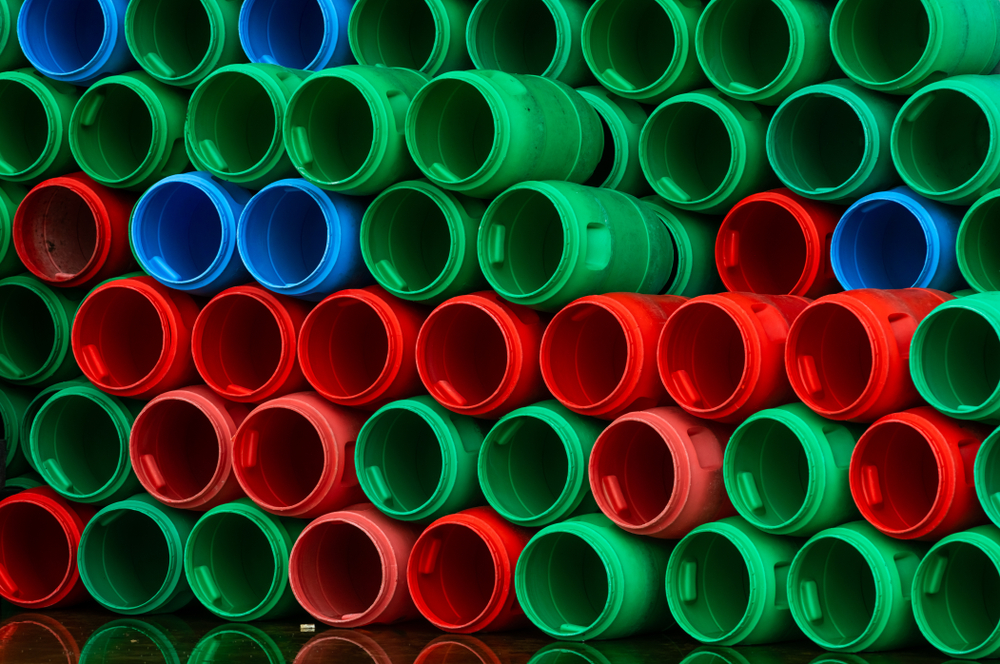S2K Commerce - Products Dropdown
Web Content Viewer
Value of Color-Coding Containers in the Food Industry

Those in the food and beverage industry are regularly staying on top of risks like contamination and others that have to do with food storage and transportation, and the use of various containers is often a big part of this approach. During such settings, one very common tactic is the use of color-coding for organization - and this approach comes with several direct benefits.
At Industrial Container and Supply Company, we're happy to offer a huge range of containers that are used in numerous industries, including items like bottles, cans, drums and others that are often ideal for food and beverage transportation or storage needs. Why is color coding a particularly common approach in the food world, and what are some of its key benefits to various food and beverage organizations? Here's a simple rundown.
How Color-Coding Works
While much of the color-coding process is self-explanatory, here's a brief primer for those who are new to the concept. In short, the idea is to designate different colors for each separate item or object (in this case, containers) that needs to be organized and stored. This way, it's easier to see at a glance which container is meant for which purpose or area of stock.
For example, you can assign red as the "dry storage" color and blue as the "refrigerated storage" color. This way, it's easy to differentiate between the two in an instant, making inventory management faster and more efficient.
Which key areas of value does color coding add to your food or beverage storage and transportation approach? Our next several sections will look into this.
Avoiding Cross-Contamination
One of the most important benefit of color-coding is that it reduces the chances of cross-contamination. By assigning different colors to different areas or types, you can quickly and easily identify which container needs to be used for which item, avoiding any potential mix-ups that could lead to contamination.
This also helps with overall hygiene, as certain containers can be designated for certain tasks - for example, assigning green for raw meats and yellow for washable items. This way, you can keep your storage centers organized and hygienic in a very simple yet effective manner.
Optimizing Efficiency
By being able to quickly identify the different types of containers that you need to use, it's easier to optimize the efficiency of your storage and transportation process. If you have a good color-coding system in place, it's much easier to quickly identify what needs to be done without having to spend time on manual checks or double-checking which container is meant for which purpose.
This helps with numerous aspects of inventory management, with the goal being to make sure that everything is stored and transported safely and in an organized manner.
Food Safety Regulation Compliance
Another major benefit of color-coding is that it helps with food safety regulations, making sure that everything is according to the standards set by the local government. By having a clear and organized approach to inventory management through color-coded containers, you can make sure that all of your processes are compliant with various food safety regulations in order to reduce any potential risks or fines.
For instance, the use of color-coded "zones" is a great way to make sure that raw meats, vegetables and other items are stored at the right temperatures in order to reduce the risk of contamination. This helps with your overall food safety compliance and makes it easier to track any potential issues if they arise.
Is Applicable to Any Facility
In addition to all of the above, the simple versatility and ease of use of color-coding makes it applicable to any facility, regardless of size or complexity. It can be used in a wide range of settings, from large commercial kitchens to smaller restaurants and even home kitchens - the same principle applies regardless.
This means that regardless of your storage and transportation needs, you can make use of color coding to quickly organize and protect products. For instance, let's say you're storing and transporting frozen products. Simply assign blue to your containers and you can easily identify which products need to be kept frozen at all times.
Overall, color-coding is an extremely useful tool for inventory management in the food and beverage industry, helping with both safety and efficiency. While it may seem like a simple concept, its benefits can be hard to ignore - so if you haven't already, it's worth giving color-coding a try. It may just help you take your storage and transportation processes to the next level.
The advantages of color coding for food and beverage storage and transportation are numerous. By assigning different colors to different items, containers, and areas, it helps reduce the risk of cross-contamination and improves hygiene. Color coding also streamlines efficiency, helping to ensure that food safety regulations are being met. And best of all - it's applicable to any facility regardless of size or complexity.
For more on this, or to learn about any of our containers and how we'll help you achieve a color-coding system with ease, speak to our staff at Industrial Container and Supply Company today.
